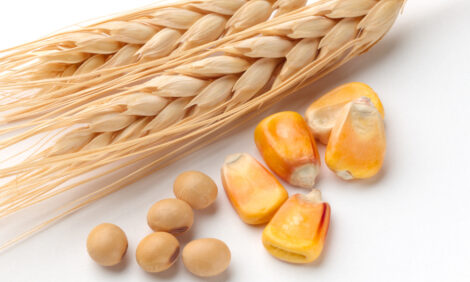



4 tips for avoiding milk fat drop at turnout
Considering dietary cation anion balance is the keyAdopting a new approach to dietary cation anion balance (DCAB) at spring turnout, along with a targeted nutrition
plan, is essential to avoid costly milk fat depression this season.
So says Dr Kerensa Hawkey, Nutritionist
& Technical Projects Manager for Mole Valley Farmers. She believes with
careful nutrition planning, it’s possible to avoid - or even reverse - the milk
fat drop which is often seen when cows go out to grass.
“Maximising milk fat is even more
important this year, considering milk price sensitivity,” Dr Hawkey says. “If
you can avoid a 0.2% drop in milk fat with a value of 1ppl, that could be worth
£50 a day or £1,500 a month for a 200 cows herd yielding 25 litres a head per
day.”
Such a drop in milk quality is often
seen as a result of the challenging characteristics of spring grass. This
includes high levels of rapidly fermentable carbohydrates (sugars) and low
fibre, which means it is rapidly digested by the cow.
“That can lead to low rumen pH and a
shift in the rumen microbe population, away from fibre digestion, resulting in
a reduction in those volatile fatty acids needed for butterfat production ” Dr
Hawkey explains. “In addition, the high oil content or Rumen Unsaturated Fatty
Acid Load (RUFAL) in fresh grass also disrupts the rumen microbes’
fermentation, further lowering the amount of specific fatty acids needed for
milk fat production.”
It also takes the rumen microbes around
three weeks to adapt to the change from a housed, winter diet, to a diet that
includes fresh grass. Consequently, it’s important to takes steps to ease the
transition.
With ground conditions looking very
difficult, spring turnout timings will vary according to location. However, the
possibility of sudden, warm and dry weather means conditions could change
rapidly meaning all farmers should be prepared for action.
With that in mind, Dr Hawkey advises the
following to optimise milk fats:
1. Take fresh grass samples
Grass quality can vary considerably year-on-year and week-on-week, so it’s worth taking fresh grass samples a few days before turnout. This will give you an idea of quality so compound type can be chosen accordingly.
2. Think about Dietary Cation Anion
Balance (DCAB)
DCAB may be traditionally associated with dry cow rations, but research from New Zealand shows that increasing DCAB for milking cows at grass can positively impact dry matter intakes and could lead to about a 0.2% uplift in milk fat. DCAB levels can be manipulated by changing the mineral balance in the total diet. Mole Valley Farmers’ dedicated mineral facility, coupled with their network of feed mills, means they are uniquely placed to create a farm-specific mineral solution.
3. Think about rapidly fermentable
carbohydrate
Rapidly fermentable carbohydrates (RFC), such as cereals, need to be carefully balanced with fresh spring grass to avoid rumen acidosis and subsequent milk fat depression. Choosing a compound with a controlled level of RFC and good levels of digestible fibre can support this. Additionally, structural fibre, such as round baled silage or chopped straw may need to be provided if cows are showing signs of acidosis.
4. Consider oil levels (RUFAL)
Choose a compound that has been designed
with lower oil levels to complement grazed grass. Mole Valley Feed Solutions
have a range of Precision Nutrition grass compounds, with controlled RUFAL
levels, created with this in mind.


